The Australian Bureau of Statistics’ (ABS) Q3 national accounts revealed that real consumer spending had stalled despite households receiving Stage 3 personal income tax cuts.
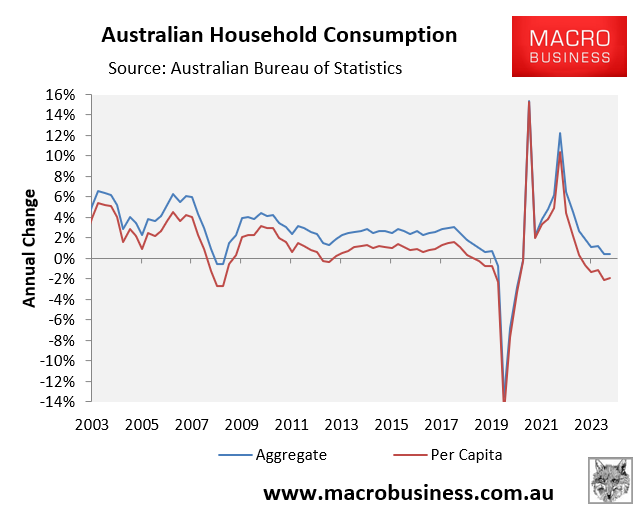
The result suggested that households had saved rather than spent the tax cuts, as evidenced by the increase in the savings rate.
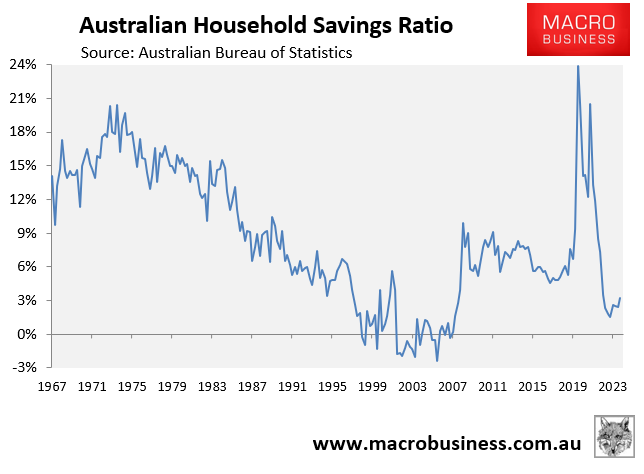
Higher frequency data on household spending showed that the trends continued into Q4.
The ABS Monthly Household Spending Indicator (MHSI) for October showed that nominal consumer spending in trend terms fell to 0.1% in October from 0.2% in September, with the annual growth rate likewise falling to 1.9% from 2.3%.
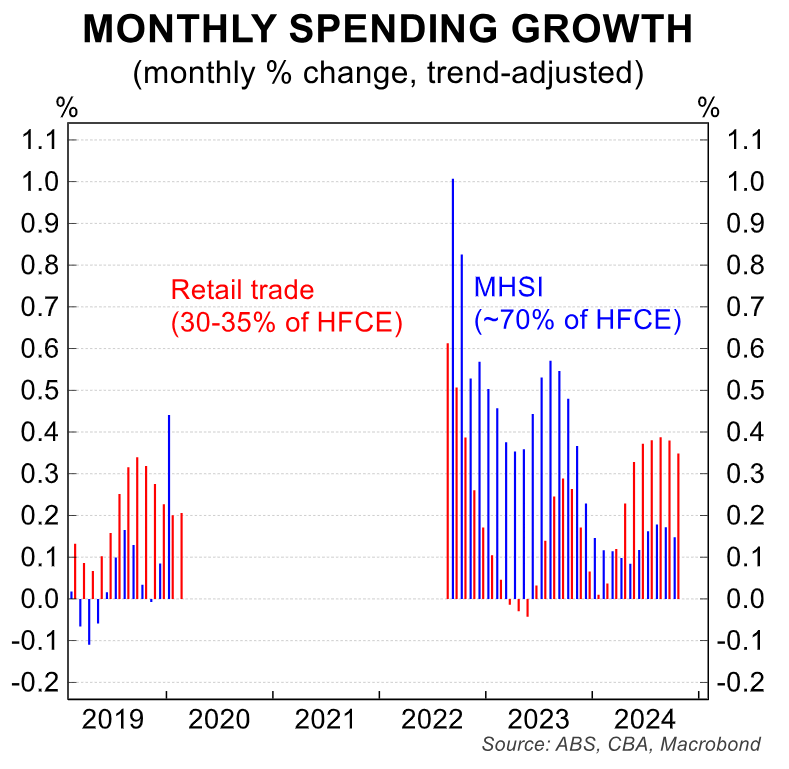
CommBank’s Household Spending Indicator for November also showed stalled consumer spending, particularly per capita.
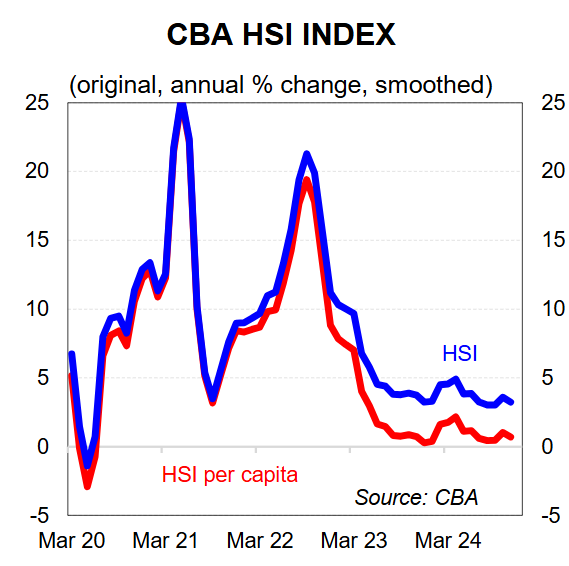
Analysis from Justin Fabo at Antipodean Macro shows that “the value of Australian household deposits again rose strongly in November, possibly supported by tax cuts/returns”.
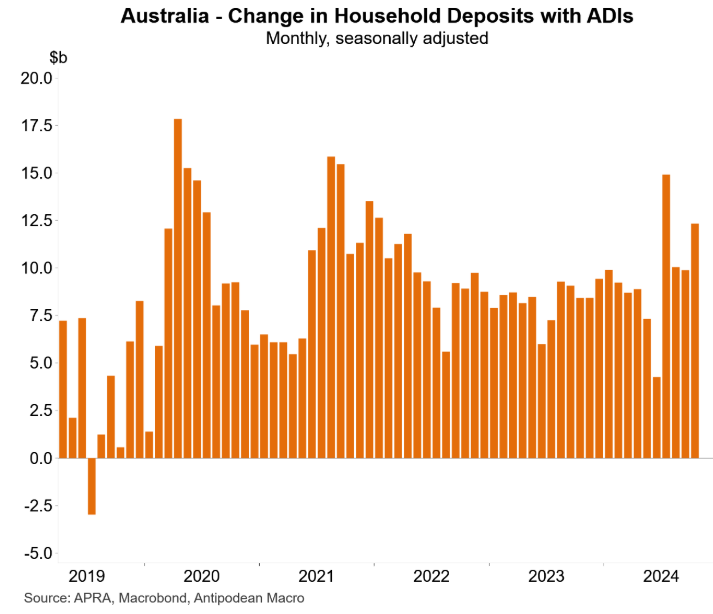
Fabo also showed that Australians have also used the windfall from Stage 3 tax cuts to pay down mortgage debts.
As illustrated below, household mortgage offset account balances rose more than usual in Q3 as tax cuts lifted after-tax take-home pay. The increase in Q3 was around $5 billion more than a year earlier, according to Fabo.
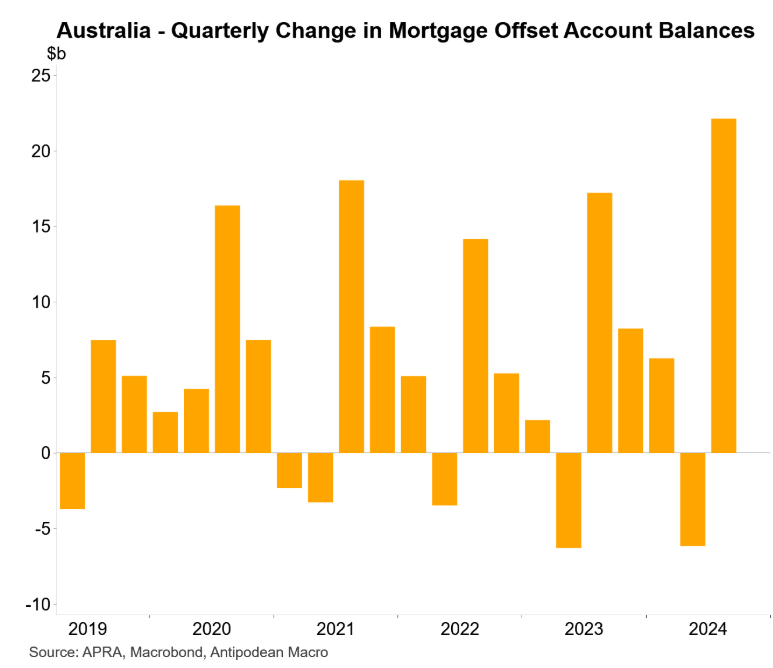
This is a positive development for financial stability and inflation, as it will have decreased household and domestic demand, other things equal.

